Book Review: 'The Catholic Church: What Everyone Needs to Know'

The closest I came to being a Catholic insider was when I attended a Catholic school in Orange County. My family had moved to a new suburb, and although my parents aren’t religious, they are practical people. The decision to send my younger sister and me to a private Catholic school was based on the necessity of carpooling.
Both my mom and dad worked full-time jobs, so the question of who would pick up the kids from school was more urgent than the decision of whether or not to raise us in a religious tradition. Our neighbors’ daughter attended the nearby Catholic school, St. Pius, which quickly made up my parents’ minds about where I’d be matriculating.
Entering the third grade at this new school was intimidating. My parents weren’t devout. In fact, our family’s church attendance was limited to midnight Mass at Christmas. Even then, my mother would nod off and insist on leaving after receiving communion.
So I was unfamiliar with the many gestures, prayers and smells of Catholic liturgy. And no one - not the teachers or my parents – had prepared me for the complicated world of Catholicism. “The Catholic Church: What Everyone Needs to Know” by John L. Allen, Jr. is exactly the kind of book I could have used, although it probably would have been beyond of my reading level at the time.
VIEW on Amazon: The Catholic Church: What Everyone Needs to Know [Paperback] (April 17, 2013)
The author’s background as a correspondent for the National Catholic Reporter gives the book a casual, conversational tone. The first chapters offer the reader clear definitions of a parish, a diocese, the laity and other pertinent terms. The format is effortlessly digestible in a Q-and-A format. One question leads naturally to the next. Many of the topics in the book have crossed my mind, but I never learned the answers in Catholic school or even during a college course on world religions. Several of the questions that Allen answers are so deceivingly basic that, in my experience, they have been easily dismissed. For example, “What is the difference between Protestants and Catholics?” or “What makes Catholics different from other Christians?”
Besides these simple explanations, Allen effectively delves into the mysterious bureaucracy behind the Church. One of my favorite chapters is “Catholicism and Money,” which goes into detail about how parish money is tracked to how the Institute for the Works of Religions, also known as the “Vatican Bank,” functions. On the other end of the spectrum there is “Angels, Demons and Saints,” which is full of clear statements on Catholic beliefs such as: angels have free will, demons are real beings and no one is really capable of knowing what heaven looks like. It’s a chapter that made me realize how incredibly different Catholicism is from other religions including other branches of Christianity.
In his well-structured coverage of a myriad of subjects, Allen dispels myths about the Catholic Church and presents a more accurate view of its present and future. While the author doesn’t dwell on the past, he offers fair, well-researched historical context, especially in the chapter, “Historial Highlights and Lowlights.”
One of the most interesting themes of the book is the global South and the changing demographics of Catholicism. A skilled reporter, Allen provides facts and statistics to paint an accurate picture of the future of Catholicism. The last chapter, which covers the boom of Catholicism in Africa, could eventually become a compelling book in its own right.
The author effectively presents the nuances of Catholicism from the grassroots to the pope or from the US to the global perspective. The book does not aim to convert the reader, rather it presents the basics. Best of all, Allen does not shy away from topics such as internal tensions and the Church’s history of scandal.
Although I eventually left the Church and religion altogether, I found Allen’s treatment to be surprisingly engaging. I may not be personally involved in the Catholic Church, but I’m still curious about it. Allen explains that examining “the largest and most centrally organized religious body on earth” is as crucial as pondering the United Nations, the White House or Microsoft for anyone who wants to understand today’s world.
Although I’ve read this book as an atheist adult, it feels like the perfect capstone to an education in Catholicism, a reminder that religion is still a driving force in the world and most likely always will be. I recommend this book to believers and non-believers alike, from college students to perpetual learners and especially to the new kids in Catholic school.
Reach Contributor Tricia Tongco here or follow her on Twitter.



